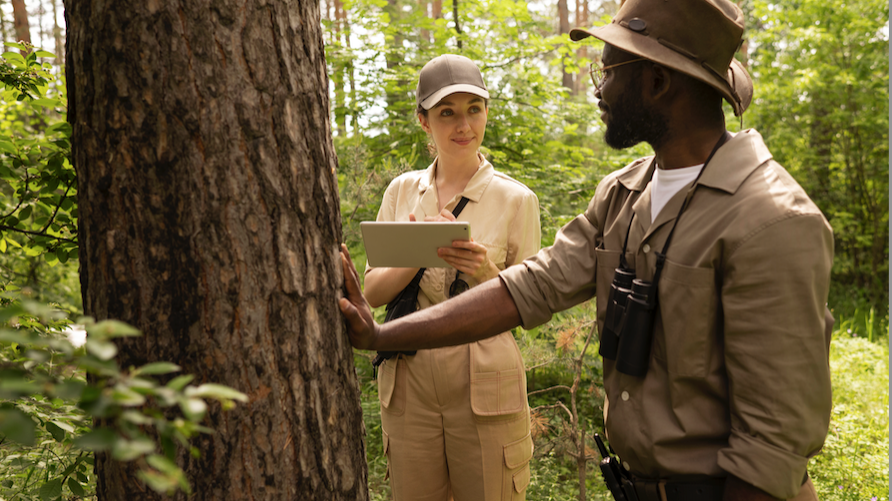 In the heart of conservation lies a groundbreaking initiative: Medtronic heart monitors in giant anteaters. This innovative approach, led by researchers from Medtronic and the Smithsonian, offers unprecedented insights into wildlife physiology. By tracking heart rhythms, crucial questions about animal well-being are answered, shedding light on stressors and enhancing conservation efforts. Join us as we delve into the remarkable world of wildlife monitoring, where technology meets sustainability to safeguard our planet's biodiversity.
In the heart of conservation lies a groundbreaking initiative: Medtronic heart monitors in giant anteaters. This innovative approach, led by researchers from Medtronic and the Smithsonian, offers unprecedented insights into wildlife physiology. By tracking heart rhythms, crucial questions about animal well-being are answered, shedding light on stressors and enhancing conservation efforts. Join us as we delve into the remarkable world of wildlife monitoring, where technology meets sustainability to safeguard our planet's biodiversity.
Advancements in Wildlife Monitoring
The collaboration between Medtronic and the Smithsonian in utilizing heart monitors for giant anteaters represents a significant advancement in wildlife monitoring. By implanting Medtronic heart monitors in these animals, researchers can gain unprecedented insights into their physiology and well-being. The data collected from these devices allows scientists to track heart rhythms, measure stress levels, and understand the impact of various environmental factors on the animals. This innovative approach goes beyond traditional tracking methods, providing a more holistic view of the lives of these endangered species. Through continuous monitoring, researchers can identify patterns, detect anomalies, and make informed decisions to support conservation efforts effectively.
The use of Medtronic heart monitors in wildlife not only enhances the understanding of animal behavior but also contributes to the conservation of endangered species. By leveraging advanced technology originally designed for human clinical use, researchers can now delve into the physiological aspects of wild animals with unprecedented detail. The insights gained from monitoring heart rhythms and stress levels can help identify key factors influencing breeding success rates and overall well-being. This data-driven approach enables conservationists to tailor interventions, mitigate threats, and ultimately increase the chances of survival for vulnerable species. The collaboration between Medtronic and conservation organizations exemplifies the potential of merging healthcare technology with wildlife conservation to create positive impacts on biodiversity.
Sustainable Conservation Practices
The application of Medtronic heart monitors in giant anteaters not only showcases technological innovation but also highlights the importance of sustainable conservation practices. By monitoring the heart rhythms of these animals, researchers can uncover stressors, track their movements, and assess their overall health in real-time. This data-driven approach enables conservationists to make informed decisions, implement targeted conservation strategies, and address specific challenges faced by endangered species. The use of advanced technology in wildlife conservation underscores the significance of adopting sustainable practices that prioritize the well-being of both animals and their habitats.
The collaboration between Medtronic and conservation organizations underscores the role of technology in promoting sustainability and transparency in global supply chains. By leveraging verified data and traceable sourcing, companies can enhance their ESG goals, ensure ethical sourcing practices, and contribute to the preservation of biodiversity. The integration of innovative solutions, such as Medtronic heart monitors, in conservation efforts reflects a commitment to environmental stewardship and responsible business practices. Through strategic partnerships and data-driven initiatives, companies can align their operations with sustainability objectives and drive positive social and environmental impacts.
Ethical Wildlife Research and Rehabilitation
The use of Medtronic heart monitors in giant anteaters not only serves a scientific purpose but also embodies ethical considerations in wildlife research and rehabilitation. By implanting these devices in animals like Helen, researchers can closely monitor their health, behavior, and interactions in their natural habitats. This ethical approach to wildlife research ensures the well-being of the monitored animals while providing valuable insights into their lives and conservation needs. The collaboration between Medtronic and conservation organizations exemplifies a harmonious blend of technological innovation, ethical considerations, and conservation goals in wildlife research and rehabilitation efforts.
The successful integration of Medtronic heart monitors in wildlife conservation initiatives highlights the importance of ethical sourcing and transparency in global supply chains. By prioritizing the well-being of endangered species and leveraging advanced technology for conservation purposes, companies can demonstrate their commitment to ethical practices and environmental stewardship. The ethical considerations embedded in wildlife research and rehabilitation efforts underscore the interconnectedness between human activities and the conservation of biodiversity. Through responsible decision-making and sustainable initiatives, companies can contribute to the protection of wildlife, promote transparency in their operations, and advance global efforts towards a more sustainable future.
Conclusion
In the realm of wildlife conservation, the collaboration between Medtronic and the Smithsonian in utilizing heart monitors for giant anteaters signifies a groundbreaking leap towards sustainable practices and ethical wildlife research. By merging advanced technology with conservation efforts, this innovative approach not only enhances our understanding of endangered species but also underscores the importance of ethical considerations and transparency in global supply chains. As we witness the harmonious blend of technology, ethics, and conservation goals, it prompts us to reflect on the interconnectedness between human actions and biodiversity preservation, urging businesses to prioritize responsible decision-making and drive positive environmental impacts through strategic partnerships and data-driven initiatives.